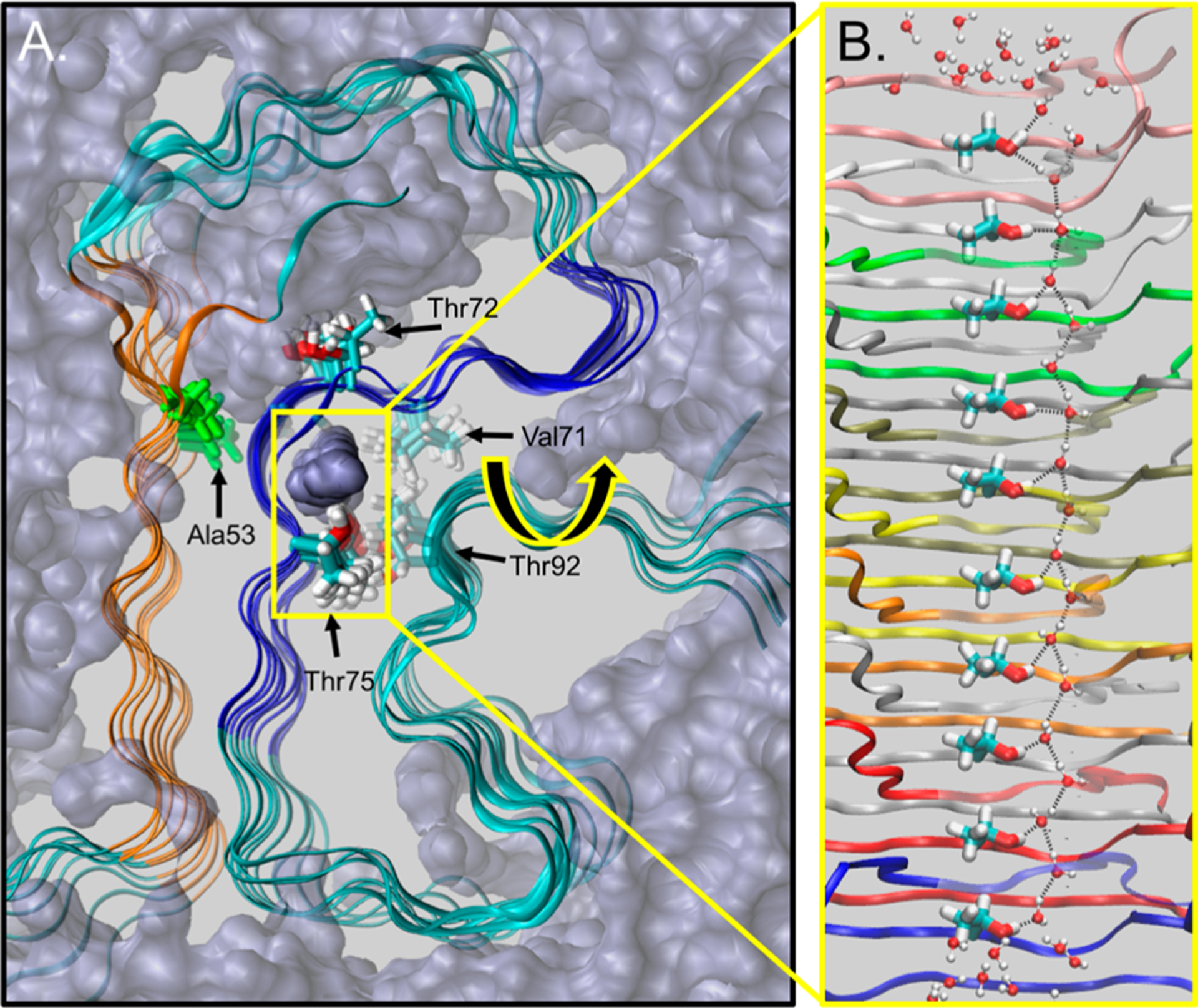Figure 4.

Threonine–water hydrogen bond network within the Greek-Key structure. (A) snapshot from a simulation of a 10-mer Greek-Key fibril (residues 29–98) where water molecules (purple, volume filling) and protein backbone (green with PreNAC in orange and NACore in blue) illustrated. The NACore residues, Thr72 and Thr75 (bold coloring) and proximal residues Val71 and Thr92 (translucent), as well as disease related Ala53 (green) are highlighted. A tunnel of water coordinates with Thr75, within a hydrophobic pocket of the Greek-Key fibril. (B) A snapshot illustrating the Thr75–water hydrogen bond network that extends throughout the Greek-Key lattice.
